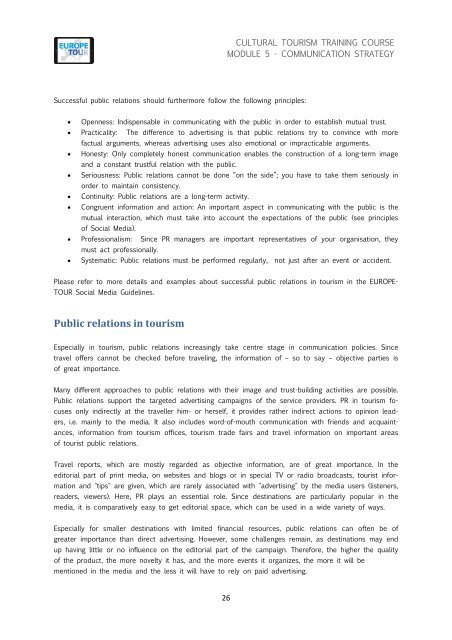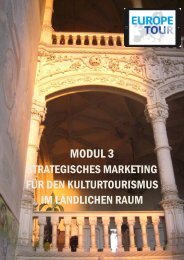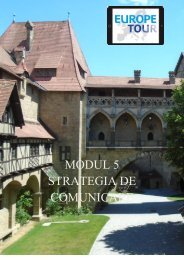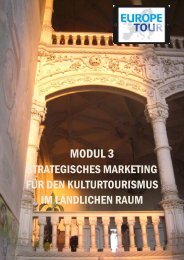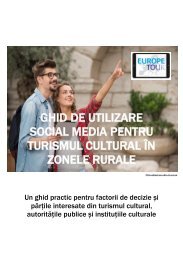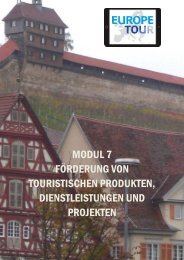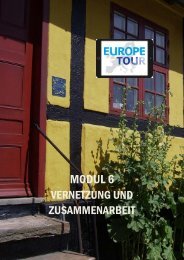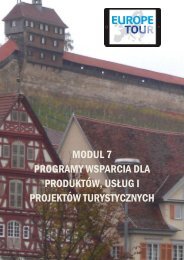M5_Communication_Strategy_v6
You also want an ePaper? Increase the reach of your titles
YUMPU automatically turns print PDFs into web optimized ePapers that Google loves.
CULTURAL TOURISM TRAINING COURSE<br />
MODULE 5 - COMMUNICATION STRATEGY<br />
Successful public relations should furthermore follow the following principles:<br />
<br />
<br />
<br />
<br />
<br />
<br />
<br />
<br />
Openness: Indispensable in communicating with the public in order to establish mutual trust.<br />
Practicality: The difference to advertising is that public relations try to convince with more<br />
factual arguments, whereas advertising uses also emotional or impracticable arguments.<br />
Honesty: Only completely honest communication enables the construction of a long-term image<br />
and a constant trustful relation with the public.<br />
Seriousness: Public relations cannot be done “on the side”; you have to take them seriously in<br />
order to maintain consistency.<br />
Continuity: Public relations are a long-term activity.<br />
Congruent information and action: An important aspect in communicating with the public is the<br />
mutual interaction, which must take into account the expectations of the public (see principles<br />
of Social Media).<br />
Professionalism: Since PR managers are important representatives of your organisation, they<br />
must act professionally.<br />
Systematic: Public relations must be performed regularly, not just after an event or accident.<br />
Please refer to more details and examples about successful public relations in tourism in the EUROPE-<br />
TOUR Social Media Guidelines.<br />
Public relations in tourism<br />
Especially in tourism, public relations increasingly take centre stage in communication policies. Since<br />
travel offers cannot be checked before traveling, the information of – so to say – objective parties is<br />
of great importance.<br />
Many different approaches to public relations with their image and trust-building activities are possible.<br />
Public relations support the targeted advertising campaigns of the service providers. PR in tourism focuses<br />
only indirectly at the traveller him- or herself, it provides rather indirect actions to opinion leaders,<br />
i.e. mainly to the media. It also includes word-of-mouth communication with friends and acquaintances,<br />
information from tourism offices, tourism trade fairs and travel information on important areas<br />
of tourist public relations.<br />
Travel reports, which are mostly regarded as objective information, are of great importance. In the<br />
editorial part of print media, on websites and blogs or in special TV or radio broadcasts, tourist information<br />
and "tips" are given, which are rarely associated with "advertising" by the media users (listeners,<br />
readers, viewers). Here, PR plays an essential role. Since destinations are particularly popular in the<br />
media, it is comparatively easy to get editorial space, which can be used in a wide variety of ways.<br />
Especially for smaller destinations with limited financial resources, public relations can often be of<br />
greater importance than direct advertising. However, some challenges remain, as destinations may end<br />
up having little or no influence on the editorial part of the campaign. Therefore, the higher the quality<br />
of the product, the more novelty it has, and the more events it organizes, the more it will be<br />
mentioned in the media and the less it will have to rely on paid advertising.<br />
26


